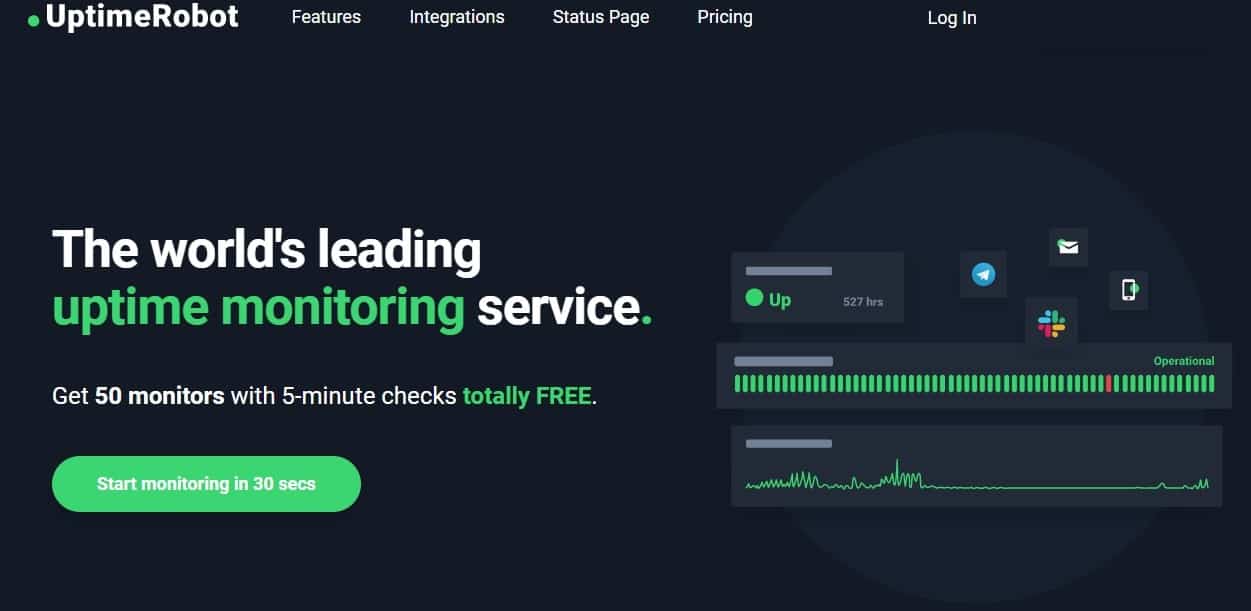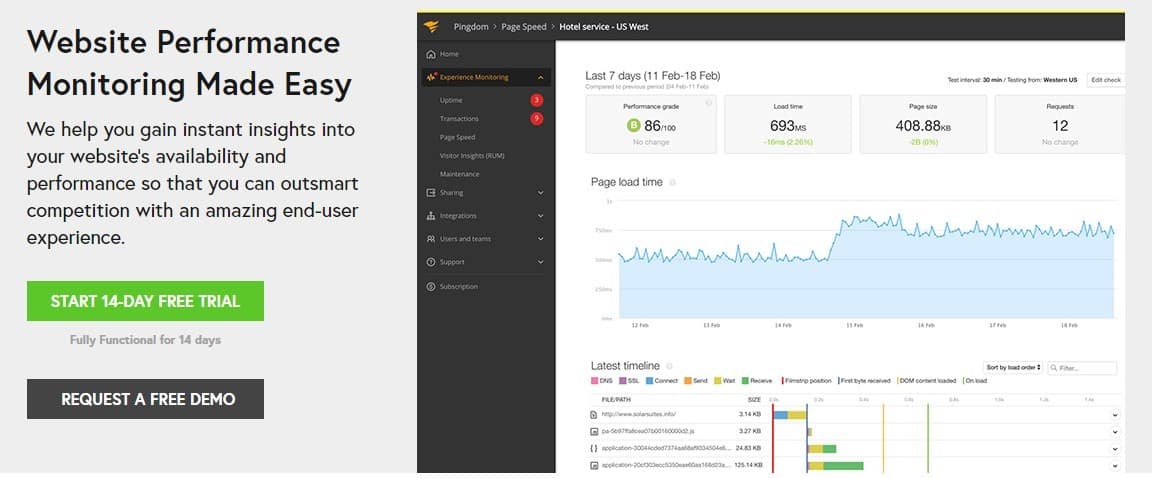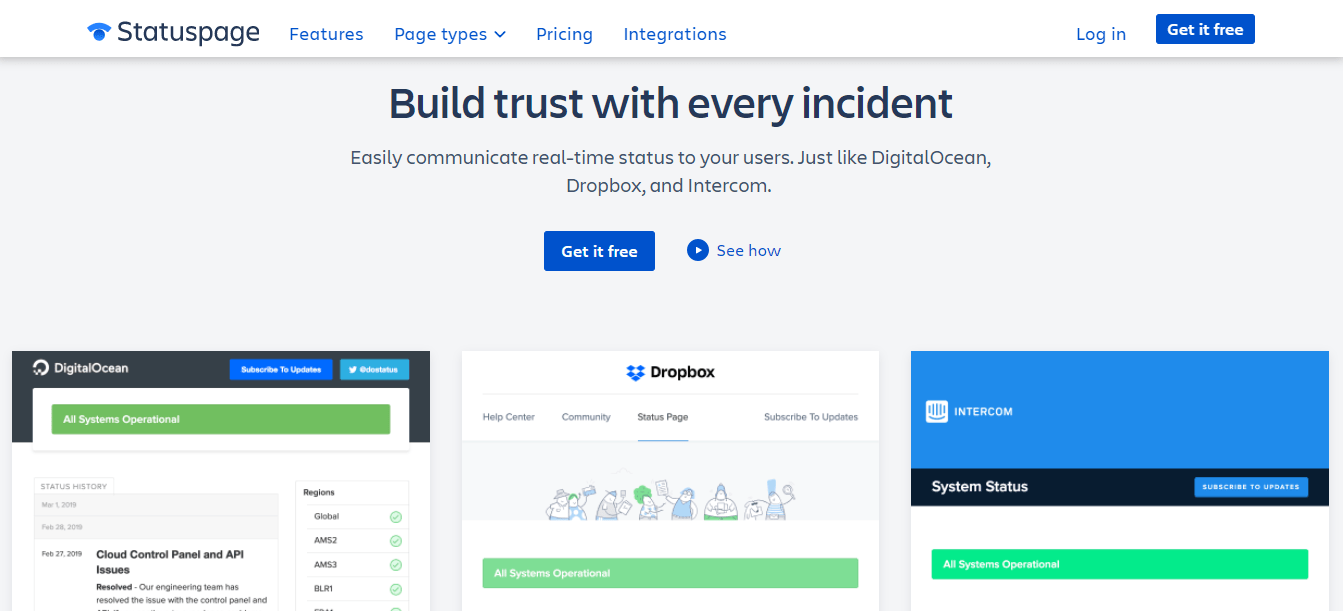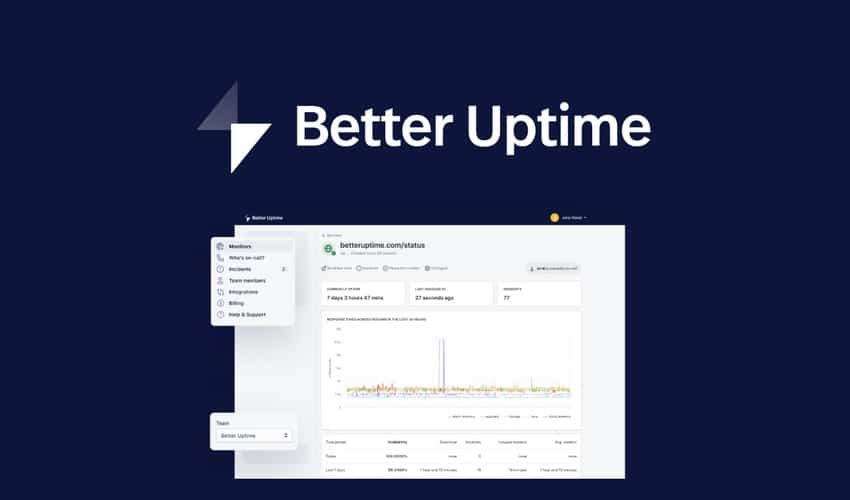If you follow sports in any capacity you’ve probably heard the term “the best ability is availability”. In sports-related cases this is connected to often injured players, however, this can easily be transferred to websites. You want your site to be available, always. Unlike stores, offices, and/or kiosks your site doesn’t have the luxury of having working hours.
In order to do so, you’ll need the proper tools and we’ve decided to single out the best ones on the market. If you’re looking to keep track of your uptime you won’t go wrong with any of the following. Without further ado, let’s start…
Better Uptime
Better Uptime offers the complete package of uptime monitoring services. With it, you’ll constantly be in the loop regarding this important aspect of your site because you’ll get notifications through email, phone, SMS, and Slack. The check is done every 30 seconds from servers around the globe to minimize the chance of any misfires.
Not only will there be no chance of you missing out on an issue that caused your site to crash, but within the notification, you’ll also receive a screenshot and error tags with a highlighted timeline that led to the crash. Getting this data immediately will go a long way towards promptly resolving the problem.
In case you’re a bigger business that has staff dedicated to site management and upkeep or are just outsourcing this aspect of your business, you’ll be able to instantly notify the person in charge of the problems.
Calendar apps like Google Calendar or Microsoft Outlook can be connected to help with team scheduling. On top of that, they’ll get to quickly reply once everything is fixed, so they don’t need to worry about it anymore.
With the backend sorted out, you need to look at the frontend. A visitor will not take kindly to not being able to access a site they’re looking for. On top of everything else, there’s even an option to create a branded status page explaining the issue to anyone that wanders in and reassuring them everything is fine.
UptimeRobot

The main selling point of the UptimeRobot is the different types of monitoring it provides. Within one tool you’ll get to monitor your website uptime, SSL certificate, port, ping, as well as cron job. While our focus is on website monitoring, we can’t deny that all these in one place represent an easy way to cover all your bases. The reports you get back make it a breeze to fix any and all issues.
Furthermore, to keep your visitors aware of what’s going on you can create status pages for times when you know the site will be down because of maintenance. This will ease the stress a visitor would endure by not being able to access the content they want and at the same time make them more likely to come back, because of the extra effort on your part to provide useful information.
Pingdom

Pingdom is a robust SEO platform that encompasses a plethora of connected and individual tools and among others provides a monitoring tool. As with any other monitoring tool, the main reason to use it will always be to know the uptime of your site and to notify you in case there’s something wrong. However, since this is a part of a much greater whole within Pingdom, there are some added features that are “borrowed” from connecting tools that enhance your monitoring capabilities.
One of the features worth highlighting is loading speed monitoring. The great thing about it is that it won’t simply give you a number that shows how fast your site loads. Instead, you’ll get data on loading times for each element on a page. If the site is becoming too slow for the average user, you can then mix and match the elements to find the optimal build.
The main advantage of the Pingdom monitoring tool is, unfortunately, it’s the greatest hurdle as well. While core features are already within the tool, in order to use it to the fullest you’ll need to acquire some if not all the other tools within the Pingdom portfolio. If you buy into everything, you’ll get more out of it, however, that comes with more expenses and a steeper learning curve.
PagerDuty

Similar to the aforementioned Pingodm, PagerDuty is also a much bigger platform than just uptime monitoring. Unlike Pingdom, however, the focus isn’t on SEO and is instead on inner company management and analytics.
Focusing on these things gives you the opportunity to connect your team(s) in a way that issues are handled swiftly and efficiently. Also, even though there shouldn’t be any recurring issues, if you do experience them, you can set up automatic responses, both for the backend and frontend. Even support tickets can be set up to be created automatically once a visitor has stumbled upon a problem.
The main issue we have is that uptime monitoring is buried within all the other features. So someone who’s just getting into site management and wants a simple tool to keep track of their site might get into trouble navigating all these features and either outsourcing the work or giving up entirely.
Statuspage

As its name suggests, Statuspage is a solution that puts its emphasis on – status pages. While you’re monitoring the situation from the backend your visitors will be presented with information regarding the problematic issues that have arisen directly on the page. This type of information sharing will remove any transparency issues and regain trust among your visitors.
Generally, all aspects of communication can be enhanced with Statuspage, most prominently from the backend to the visitors and throughout back-office staff internally. An interesting approach here is addition through subtraction. In place is a great method that filters out only the most important notifications. You’ll still get error logs on demand for anything you need, but critical errors are highlighted above all else.
Pulsetic

Pulsetic is a cutting-edge website monitoring tool designed to streamline the process of keeping track of your websites’ performance and uptime, ensuring that they are operating smoothly and efficiently. With its user-friendly interface and robust features, Pulsetic aims to simplify website monitoring for businesses and individuals alike.
One of the primary offerings of Pulsetic is the creation of status pages, which provide a real-time overview of the health and performance of your website. These status pages offer a snapshot of crucial metrics, giving you and your users a clear understanding of the site’s current state. Another remarkable aspect of Pulsetic is its no-code approach to creating beautiful and customizable status badges and pages. This feature empowers users to build trust in their brand by designing status pages that reflect their brand identity, without requiring any technical or coding skills.
In addition to status pages, Pulsetic’s versatile notification system ensures you are always in the loop when it comes to your website’s performance. If any issues arise or your site goes down, you can receive immediate alerts through a variety of channels, including phone calls, SMS, email, Telegram, or Slack. This prompt notification system enables you to address any issues in a timely manner, minimizing the impact on your users and business operations.
In summary, Pulsetic is a comprehensive website monitoring tool that makes it easy to track your site’s performance and quickly respond to any issues. With its intuitive status pages, wide range of notification options, and no-code customization features, Pulsetic is the perfect solution for businesses and individuals seeking a reliable and user-friendly website monitoring tool.
Conclusion
Every uptime monitoring solution we’ve highlighted is on the list for a reason and each one has some interesting defining feature that’s able to separate it from the pack. Having said that, we need to once again put an emphasis on Better Uptime for being truly the simplest to use, most cost-effective (plans start at the low price of $49), all the while still offering everything you would ever need for uptime monitoring. Be sure to give it a go, you won’t be disappointed.

Add the site UptimeControl.net to the article, because only they have a 3-minute site availability check interval on the free plan.